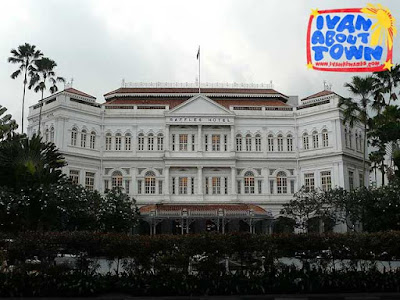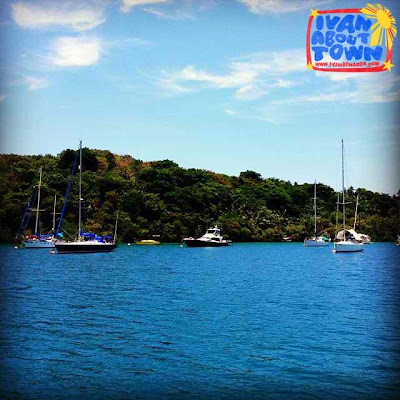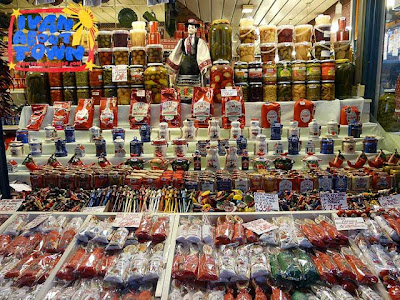Singapore's
Civic District is the heart of colonial Singapore. Walking around the district gives visitors a glimpse of monuments and structures that connect modern Singapore with its rich historical past.
 |
| Kwan Im Thong Hood Cho Temple |
I started my walk at the Bugis Station, going through Waterloo Street where the
Kwan Im Thong Hood Cho Temple (观音堂佛祖庙) and
Sri Krishnan Temple can be found. Kwan Im Temple, also known as the
Guan Yin Tong Temple, is quite popular especially to devotees of its main deity
Kuan Yin (观音), the Goddess of Mercy, who they pray to for good luck. The temple has existed since 1884 and survived the Second World War. But the original structure did not survive a fairly recent renovation. And most of what you see today dates back to 1982.
 |
| Sri Krishnan Temple |
Sri Krishnan Temple, dedicated to
Sri Krishna and consort
Rukmini, dates back to 1870 and is the only South Indian Hindu temple in Singapore. Further down Waterloo Street is Southeast Asia's oldest Jewish synagogue, the
Maghain Aboth Synagogue, which dates back to 1878.
Across the road, along Queen Street, is the
Church of Saints Peter and Paul, a Catholic church that was completed in 1870. Further down Queen Street is Singapore's oldest Catholic church and seat of the
Archdiocese of Singapore, the
Cathedral of the Good Shepherd, completed in 1847.
Beside the Cathedral, along Victoria Street, is
CHIJMES (pronounced
chimes), the former Catholic convent known as the
Convent of the Holy Infant Jesus (CHIJ) and its middle education school. The complex has been adaptively reused as a dining, shopping and entertainment center. The chapel is now a multi-purpose hall that caters to musicals, recitals and other performances and weddings of course.
 |
| Raffles Hotel |
 |
| St. Andrew's Cathedral |
The iconic
Raffles Hotel is near the corner of Beach Road and Bras Basah Road. Further down is the Anglican
St. Andrew's Cathedral. The first was church built in 1836. The current cathedral dates back to 1861.
 |
| Padang |
By this time, after walking quite a lot, you might have gotten an overdose of heritage. But it gets better. If you are not really the type who likes walking a lot, you can actually start your walk at the St. Andrew's Cathedral via the City Hall MRT Station. Beside the sprawling grounds of the cathedral is a vast green field called the
Padang, which in a way is Singapore's central square. Around it are the old government buildings of colonial Singapore which include
City Hall and the
Old Supreme Court, both currently being renovated and converted to house the
National Art Gallery that will open several years from now.
 |
| Asian Civilisations Museum |
 |
| Boat Quay |
You can also see the
Singapore Cricket Club and the
Victoria Theatre and Concert Hall, which is also being restored as we speak and covered with scaffolding. In the area are the
Dalhousie Obelisk,
Asian Civilisations Museum (Empress Palace Building) and the
Raffles's Landing Site, where Sir Thomas Stamford Raffles landed in 1819. Across the river, you can see
Boat Quay, old shop houses and warehouses that have been converted into chic and trendy bars and restaurants.
 |
| Cavenagh Bridge |
 |
| The Fullerton |
There are two old bridges which bring you to the other side of the Singapore River, the now pedestrian
Cavenagh Bridge and
Anderson Bridge which connects to Fullerton Road and the Fullerton hotel complex, fine examples of adaptive reuse.
The Fullerton was the former
Singapore Post Office while the
Fullerton Bay Hotel's main entrance and lobby is the former
Clifford Pier Terminal.
Don't forget to pass by
Merlion Park for a photo with another Singapore icon, the
Merlion, and a nice view of
Esplanade and
Marina Bay Sands.
 |
| Satay at Lau Pa Sat |
I ended my tour near the Raffles Place MRT Station, capping it off with a
satay dinner at
La Pau Sat Market, a preserved colonial market converted to a hawker centre in the heart of Singapore's business district.
Another area of the Civic District I plan to explore when I return to Singapore is
Fort Canning Park. Around it include the
National Museum,
Perenakan Museum and
Singapore Philatelic Museum.
How to get to the Civic District
There are several MRT stations that can bring you to the Civic District. Aside from Bugis and Raffles Place Stations at the northern and southern ends respectively, there is City Hall Station, and the Bras Basah and Clarke Quay Stations on opposite ends of Fort Canning.
Thank you to the Singapore Tourism Board and Agatep Associates for their valuable assistance during this trip.


















































